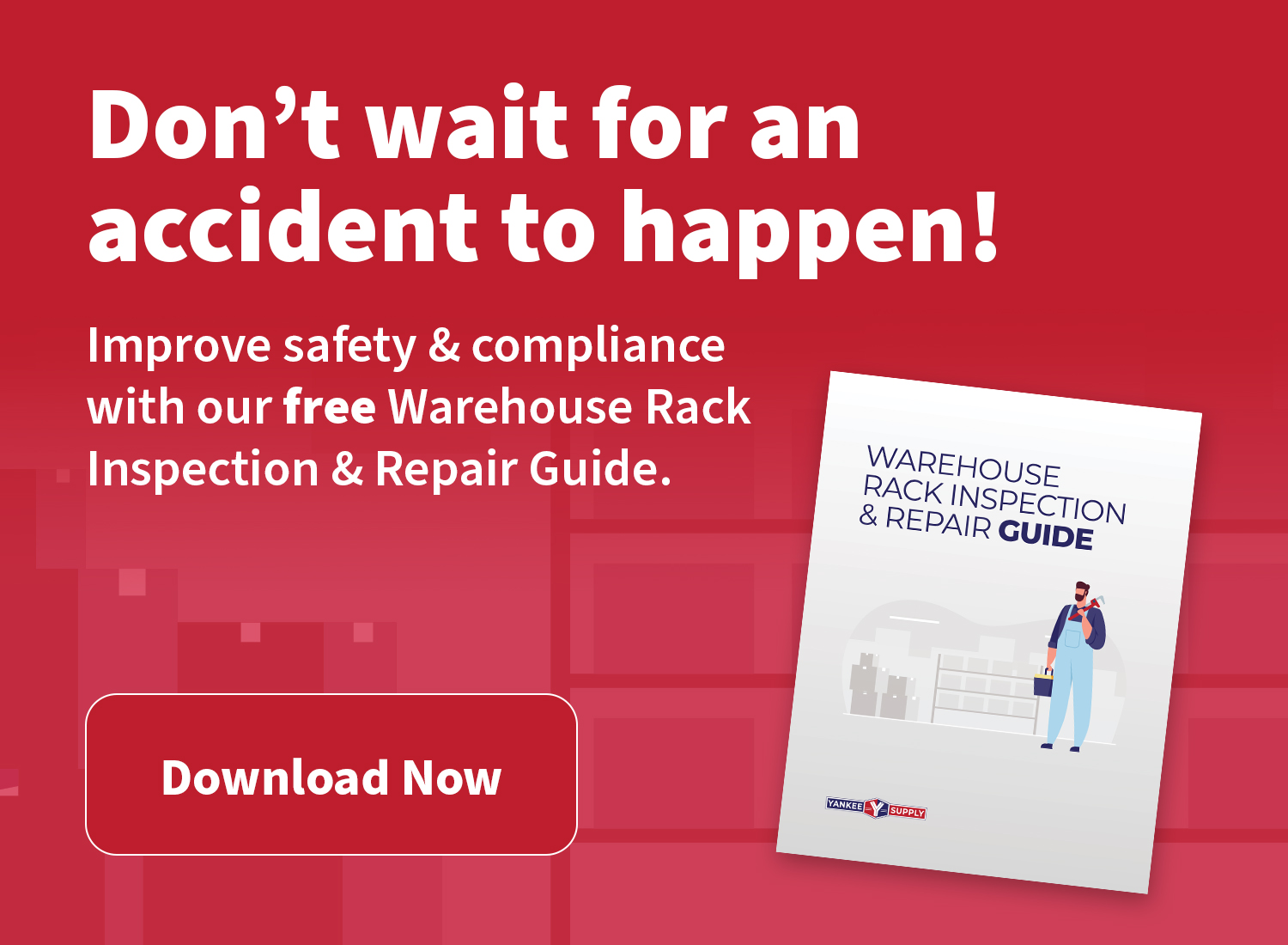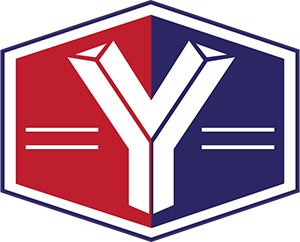As a new operations manager tasked with designing a floor plan, figuring out where to begin and where to go for support can be overwhelming.
In order to design its plan with as little friction as possible, you need a clear project management approach whereby you define objectives, create a schedule, and follow best practices for design and implementation.
In short, how to design a warehouse floor plan 101 means relying on good planning.
The Importance of Warehouse Design
A floor plan has a direct impact on the overall efficiency, productivity, and ultimate profitability of a business. Moreover, as the very foundation of supply chain efficiency, a floor plan will play a huge role in a business’s scalability.
If designed inefficiently, a warehouse floor plan can stunt opportunities for growth by decelerating operations, wasting resources, and, generally, hampering day-to-day productivity. With a well-designed warehouse floor plan, on the other hand, teams can make better use of both time and resources—key catalysts for business growth and scalability.
But designing the optimal warehouse floor plan isn’t a cut-and-dry, cookie-cutter task. Rather, figuring out how to design a warehouse floor plan will vary greatly depending on the size of the warehouse, the specific goods at hand, the level of technology in use, etc.
In many ways, when you design a warehouse floor plan, you are designing the future success of the business.
The Phases of Warehouse Design
Determining how to design a warehouse floor plan begins with organization and understanding the key steps of the process:
- Planning
- Design
- Implementation
- Closing
If you work with reliable partners, you’ll be able to create a warehouse design that fulfills all needs, overcomes current pain points, and prepares the business for scalability.
Phase 1 – Planning
Step 1: Identify Problems
Taking on a big project like warehouse design begins with identifying needs and the major problems to be solved.
Start by thinking about current flaws with equipment and traffic flows of both products and people.
A good way to identify problems in your warehouse is by getting down to the nitty-gritty and talking to workers on the ground level. After all, no one will know more about the daily traffic flows than your warehouse team, so ask them about their daily struggles: What inefficiencies do they find challenging? What are their major pain points? Particularly, you’re picking team will be great candidates for survey; their constant movement around the warehouse means they’ll know the ins and outs of daily operations better than anyone.
You can also leverage technology to identify some big problems in the current warehouse layout.
If your warehouse uses a warehouse management system (WMS), don’t forget to tap into this wealth of knowledge. Today, these systems do more than just track inventory; they also collect critical operational data. Assessing data history can help you understand the flow of goods throughout the warehouse (i.e., high-traffic areas, the most frequently-moved goods, the fastest-moving items, the slowest-moving items, and how long it takes to store, pick, pack, and ship goods, etc.).
This data will give you insight to better identify areas that need change.
Step 2: Create a Map
Once you’ve outlined the main challenges to overcome, the next step is to create a visual diagram of the warehouse.
If you have an existing map or access to the warehouse’s blueprints, start here. If not, draw a mock-up of the warehouse on grid paper or do it digitally with design software. Drawn on grid paper, a general rule of thumb is one square = one square foot.
A hand-drawn map doesn’t have to be detailed—but it must be precise. Having accurate measurements will help prevent errors when it comes time to install equipment and shelving.
As you create your map, label any fixed areas you’ll need to work around, such as:
- Doors
- Stairways
- Beams, columns, supports
- Height restrictions
- Offices
- Bathrooms
Following physical entities, next consider all movement and activity in the warehouse. For example, this includes:
- Staging areas
- Packing decks
- Outbound shipment area
- Free areas
- Damaged products area
Lastly, add arrows to your map to detail the current workflows of your warehouse.
This is where worker insight will be important. Talk to your team and make a list of key processes they conduct on a day-to-day basis. Then, draw arrows to indicate the directions of these processes on your map so you can get a full, visual understanding of the current traffic flow of your warehouse.
Step 3: Make a Plan
Finally, carefully analyze the map.
Take a good look at all the areas, equipment, and flows you’ve detailed on your floor plan. Now is the time to find ways to optimize your warehouse operations with a new layout.
Consult the list of problems you identified in Step 1. Consider these problems in relation to the map of your warehouse with its current layout and traffic flow. Remember your notes from worker feedback, and strategize ways to make a change.
As you consider ways to optimize with a new floor plan, don’t forget to pay attention to authority guidelines.
The Occupational Safety and Health Administration (OSHA), for example, offers a pocket guide of its Worker Safety Series for warehouses that you can reference as you incorporate safety initiatives in the new warehouse design. Guidelines from local and state authorities need attention, too. You must obtain all proper licenses and certifications and comply with necessary regulations as you proceed with warehouse design. This is not only necessary to ensure the safety of all workers, but it will also help the company avoid fines or legal problems.
The final step of the planning phase is to organize a detailed plan of attack:
- Make a list of all work to be done. Organize these objectives by order of importance so you can allocate budget and time to high-priority tasks.
- Build a list of any warehouse technology you may enlist to further streamline and automate operations.
- Create a schedule that details all tasks to be completed and notes pertinent deadlines.
- Assess your financial constraints and create a budget
Phase 2 – Design
It’s critical to take the time to plan before diving into the design phase. Proper planning will ensure that you and your team enter the design phase with agreed-upon objectives and clear problems to solve. It will also help you stay on track with budget and scheduling as you plan the details of the design. Deciding how to design a warehouse floor plan comprises three main elements: space, equipment, and flow.
Step 1: Choose the Warehouse Equipment
The first step in designing a new warehouse is determining what kind of equipment you’ll need.
There are three main kinds of equipment to consider: storage and shelving; workspace equipment; material-handling equipment.
Remember that purchasing pre-owned equipment is an attractive alternative to buying new. In the face of budgetary constraints, opting for pre-owned rather than brand-new is an obvious way to reduce costs.
When shopping for pre-owned warehouse equipment, what’s most important is that you assess the condition of the equipment and the credibility and competency of the vendor. Above all, you need a partner you can rely on for expertise, experience, and excellence. As you won’t have time to scrutinize all the minutia yourself, having a partner you can trust will give you peace of mind that you’re getting the right equipment you need for optimal efficiency.
Assessing a vendor’s track record is one way to determine if they’ll be a credible partner who can fulfill your needs. You also need to consider whether they have the capacity to handle the scope of your project—both now and in the future as business scales and the warehouse must grow.
Storage and Shelving
No matter what the industry, almost all warehouses will need some kind of storage and shelving. Popular options include:
- Pallet racks
- Heavy-duty shelving
- Light-duty shelving
- Cantilever racks
- Warehouse-caliber boxes, hoppers, and barrels
- Small parts and assembly bins
Workspace Equipment
After storage units, next consider what kind of workspace equipment will be needed in the warehouse.
Again, this is a good place to talk to team members who are on the warehouse floor everyday, as they can provide real-life insight into what’s missing and/or what’s inhibiting their productivity.
Popular options include:
- Multi-use tables and workbenches
- Specialty manufacturing assembly stations
- Packing stations
- Shipping stations
- Pallet-packing freight-scale stations
Material-Handling Equipment
Finally, you also need to think about what kind of equipment workers will need to transport goods within the warehouse. Having the right material-handling equipment will ensure smooth operations and reduce wasted time.
Popular options include:
- Forklifts
- Stock carts
- Pallet jacks
- Rolling staircases
- Conveyors
Step 2: Organize the Space
Once you know what equipment you’ll need for the warehouse, you can think about how to organize the space.
This begins with determining how much space is in your warehouse. Then you can figure out how to properly allocate the space for production areas, workflow zones, and storage areas.
But just knowing the total square footage of your warehouse isn’t enough. You also need to know the warehouse space utilization. If you’re using a WMS, use this to find the total volume of all products stored in your warehouse. Divide this number by the total storage area size and multiply by 100 for your warehouse space utilization.
When you know how much space is available and how much space is actually in use, then you can make plans to more optimally use the space. Keep in mind that 85% capacity is considered the sweet spot. Anything below reduces profit potential, while going north of this number leads to congestion and lost productivity.
For the design of your new warehouse, you’ll have to organize the space to accommodate both equipment and storage areas.
First, consider how much space the desired equipment will occupy. On top of that, remember to leave enough space around all equipment. This is a detail often overlooked; if forgotten, workers will struggle to access equipment and navigate the warehouse.
Storage should never be an afterthought when planning a warehouse layout. In fact, best practices recommend that warehouses only use 22-27% of total space for product storage. You need to design smartly so you can maximize storage areas without sacrificing too much of your total space to storage.
Consider what you need to store. This will determine what kind of units are ideal for your warehouse (e.g., vertical, dynamic, static) and how much space to dedicate to storage. Again, remember to allocate enough space for workers to comfortably move around these units in the warehouse.
Lastly, don’t forget to consider the future growth of the warehouse.
Even as you make plans to optimize today’s operations, you also need to think about planning for scale. Throughout the design process, continuously ask yourself: Does this design include enough room for growth?
Taking future growth into account will ensure you don’t need to start from scratch somewhere down the line as business scales.
In the end, smart warehouse design can be summed up in two words: optimization and flexibility. You must optimize for today but remain flexible for future scalability.
Step 3: Arrange the Traffic Flows
After choosing equipment and organizing the space, the next step is to arrange the traffic flows.
Unfortunately, efficient traffic flows are often sacrificed in the name of preserving square footage. This is a mistake, as good traffic flows are key to ensuring optimized warehouse operations. After all, the more efficiently you use space and resources, the more you can boost productivity, improve order fulfillment rates, and, ultimately, improve your bottom line.
Other best practices to keep in mind include:
- Strive for an uninterrupted flow of goods, workers, and equipment
- Avoid complicated designs that inhibit productivity
- Limit possibilities for disruption
- Minimize safety issues
Here’s how to get started designing the most efficient traffic flows for your warehouse:
- Make a list of key tasks: How can you arrange these processes in a logical sequence?
- Specify what teams will carry out these tasks: How many workers will be involved in each task? What are their levels of training? How are their shifts organized?
- Determine what methods they’ll use to get it done: What kind of storage areas, equipment, etc. will teams use the most frequently?
- Identify which areas of the warehouse will be used for each task: How much time will teams spend in each area? Is it easy for teams to navigate to each of these areas? Is it easy for them to locate and move items within these areas?
- Consider your technology needs. Do you or will you use a WMS? Automation is playing a bigger role in optimizing the supply chain, as it helps reduce the effort, errors, costs, and wasted time that can result from manual tasks.
With this checklist, you can predict patterns in the warehouse so you can design the most efficient traffic flows for daily operations.
Step 4: Test the Design
Lastly, before you move ahead with implementation, you need to test the design of your new warehouse layout.
This is a simple but crucial step in the design phase. By taking the time to thoroughly test your design, you can catch—and resolve—costly errors before you waste time installing storage units and equipment.
Start by using masking tape to mark off key production zones and pieces of equipment. Then, do a literal walk-through of the warehouse.
In order for this test to be worthwhile, you must act as if you’re truly conducting operations. For example, as you walk through the warehouse, practice carrying around boxes and rolling carts through aisles. This will help ensure you have allotted enough space to give workers clearance to easily navigate traffic flows.
At this stage, team feedback is golden. Ask workers to test out their daily operations on your new floor plan. As they’ll be the ones actually fulfilling these tasks, they’re best suited to judge the efficacy of the new design and determine if any pain points remain.
As you approach the end of the design phase, there may be pressure to accelerate the process and move onto implementation. Do not, however, rush the tests.
Taking the time to thoroughly test the design of your new warehouse layout will amply reward you later, as this is your last chance to make big changes without grossly upsetting the schedule or budget. Testing your design, finding flaws, and rectifying them now will save you money, time, and hassle; conversely, skipping testing and being forced to make unexpected changes down the road will disrupt your schedule, inflate your budget, and push back the final time to completion.
Phase 3 – Implementation
Once your design is tested, perfected, and ready to go, it’s time to move onto the physical implementation of the build.
But your job isn’t done yet. Now you need to make a plan for implementation.
Step 1: Finalize Scheduling
So far, you’ve been working with an estimated schedule. Now that you have the specifics of all equipment and supplies needed, it’s time to get everything booked and finalized.
Consider if implementation will take place all at once or in steps. Which approach is right for your warehouse will vary depending on a few factors, e.g., the size of your warehouse and any specifications from vendor(s).
You should also consider the time of year, as this can influence vendor availability. Plus, if it’s busy season for your business, it’s likely not the best time to schedule an overhaul of the floor plan.
Step 2: Communicate with Workers
Before implementation begins, make sure you give workers ample notice of the schedule.
Keeping your team in the loop will not only help reduce potential worker dissatisfaction and turnover, but it will also lead to a smoother process overall, as teams won’t be unknowingly interrupted.
Step 3: Document Thoroughly
Throughout the planning and design phases, you’ve likely maintained detailed notes with feedback from workers, thoughts on equipment needs, ideas about traffic flows, etc.
Make sure you retain these and continue to take notes throughout the implementation phase. These will prove invaluable in the future as you tackle new projects when business scales.
Phase 4 – Closing
When all construction is finally wrapped up, it can feel like a big relief to close the book on the design process.
But you’re not quite done yet.
Properly closing out the process is key to ensuring continued success in the future.
Start by reviewing what went well and what went wrong. This is not the only time this warehouse layout will change (although, if it was done well, hopefully it won’t have to be done for awhile). Having notes of where you made mistakes and what you would like to change for next time will help you start off on the right foot for future projects.
Next, make sure you share these notes.
Communication should be a priority throughout the entire process, but particularly at the end. Take the time to meet with your team and share what you learned about what went well and what went wrong throughout the design and implementation phases. Ensure these notes are accessible so you and other key stakeholders can review them during future projects as business scales.
Finally, reflect on where you started. Remember the problems you identified in the beginning that you wanted to overcome?
With inevitable time and budgetary constraints, it’s likely you weren’t able to accomplish everything you intended. But if you properly documented the process, then you can use these notes to help you plan ahead when it’s time to start the next project.
Conclusion
Designing a warehouse floor plan is no easy task.
But done correctly, it will lead to leaner warehouse operations, minimized costs, maximized productivity, and overall improved supply chain efficiency.
Good planning is the first step to achieving an optimized warehouse floor plan. Who you decide to partner with for warehouse and material-handling equipment will also be a strong determinant in the ultimate success of your floor plan.
As a new operations manager, you need a partner who has the capacity to handle the scope of your project and both the competency and credibility to help you get the job done. With over 40 years of experience, Yankee Supply is an industry leader in warehouse and material-handling supply. We have developed a strong reputation for working with our customers to locate and secure the best new and used warehouse and material-handling equipment at the lowest possible price.
Contact Yankee Supply today at 800.232.7225 for expert Warehouse floor planning and warehouse equipment.









